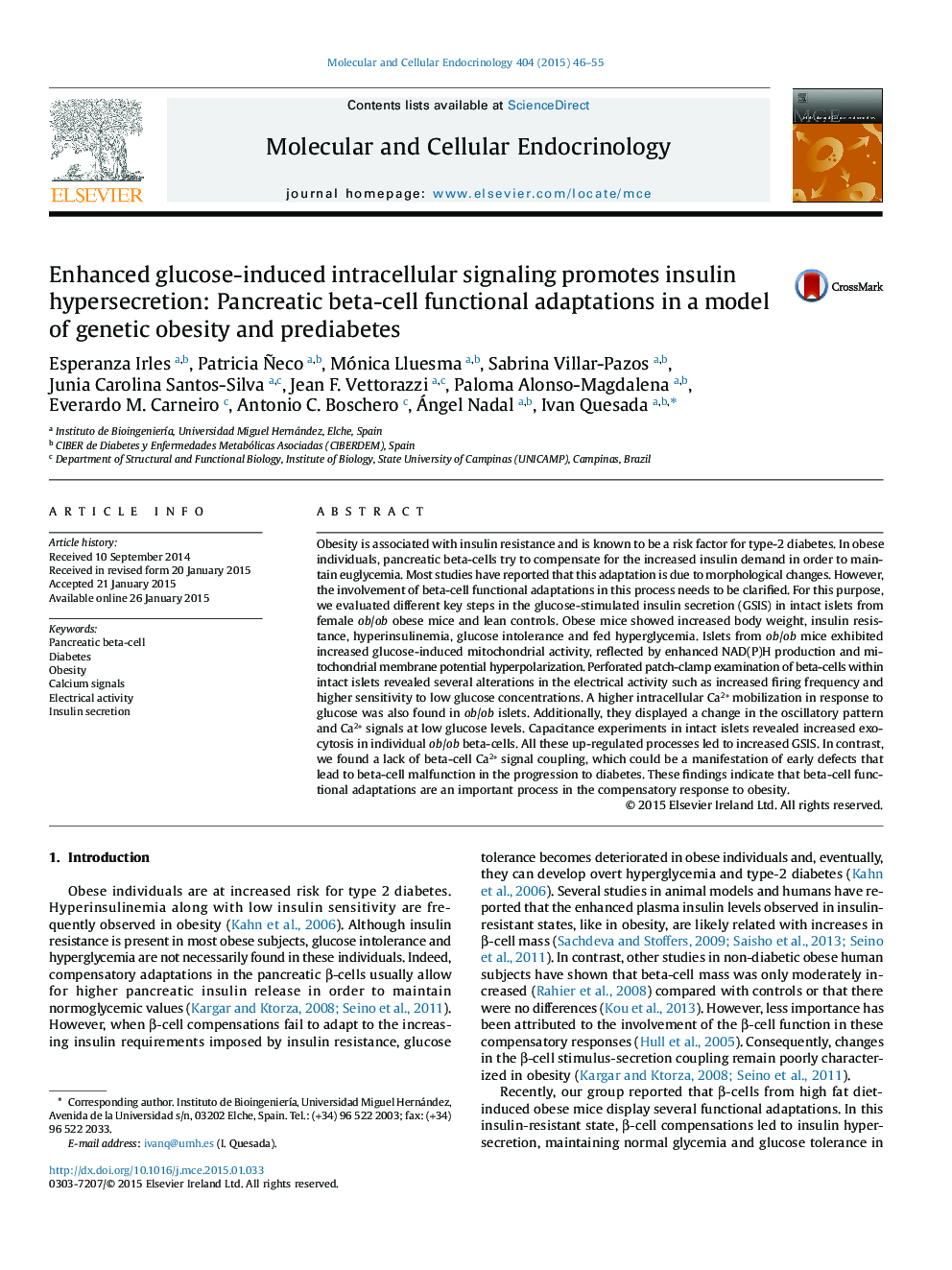| Article ID | Journal | Published Year | Pages | File Type |
|---|---|---|---|---|
| 2195884 | Molecular and Cellular Endocrinology | 2015 | 10 Pages |
•Pancreatic β-cells from obese ob/ob mice display numerous functional adaptations.•ob/ob β-Cells exhibit enhanced mitochondrial activity in response to glucose.•ob/ob β-Cells manifest several alterations in the electrical activity.•ob/ob islets show enhanced Ca2+ signals induced by glucose and non-glucidic fuels.•Synchrony among ob/ob β-cells is reduced, likely due to Cx36 reduced expression.
Obesity is associated with insulin resistance and is known to be a risk factor for type-2 diabetes. In obese individuals, pancreatic beta-cells try to compensate for the increased insulin demand in order to maintain euglycemia. Most studies have reported that this adaptation is due to morphological changes. However, the involvement of beta-cell functional adaptations in this process needs to be clarified. For this purpose, we evaluated different key steps in the glucose-stimulated insulin secretion (GSIS) in intact islets from female ob/ob obese mice and lean controls. Obese mice showed increased body weight, insulin resistance, hyperinsulinemia, glucose intolerance and fed hyperglycemia. Islets from ob/ob mice exhibited increased glucose-induced mitochondrial activity, reflected by enhanced NAD(P)H production and mitochondrial membrane potential hyperpolarization. Perforated patch-clamp examination of beta-cells within intact islets revealed several alterations in the electrical activity such as increased firing frequency and higher sensitivity to low glucose concentrations. A higher intracellular Ca2+ mobilization in response to glucose was also found in ob/ob islets. Additionally, they displayed a change in the oscillatory pattern and Ca2+ signals at low glucose levels. Capacitance experiments in intact islets revealed increased exocytosis in individual ob/ob beta-cells. All these up-regulated processes led to increased GSIS. In contrast, we found a lack of beta-cell Ca2+ signal coupling, which could be a manifestation of early defects that lead to beta-cell malfunction in the progression to diabetes. These findings indicate that beta-cell functional adaptations are an important process in the compensatory response to obesity.
